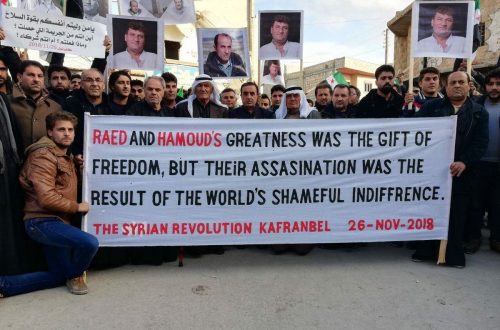It was two years ago today that we published our first post about the demonstrations that marked the beginning of the uprising in Syria against Bashar al-Assad’s brutal regime.
Of course the regime was quick to blame it all on you-know-who.
After more than 70,000 deaths, it may be hard to recall that the uprising began non-violently and became an armed struggle only after the government responded brutally to peaceful demonstrations (which, amazingly, still occur on a regular basis).
The general consensus is that the Assad regime is doomed, eventually. But who could have guessed two years ago that it would still be clinging to power while the uprising continued?
The longer it drags on, the less possible it is to be hopeful about the ultimate result– even when Assad is defeated. Reports of hundreds of Saudis crossing into Syria to join Islamic extremist militias fighting against Assad are hardly encouraging, even to those like me who long for the end of his awful regime.
Blogging at The New Yorker, Rania Abouzeid paints a vivid picture (worth reading in full) of what the Syrian war is like in terms of brutal behavior on both sides and immense, immeasurable suffering:
What is the Syrian war like? It is frightening, bloody, depressing, and sometimes uplifting. It is numbing. It is every human emotion on a heightened level. What does the Syrian war look like? Above all, it looks like the names and faces of the seventy thousand people the United Nations says have been killed in the two years since the uprising began. The real figure is likely much higher. The U.N. number is of those whose names or faces are known, and doesn’t include the countless others who are still missing, who may be in mass graves. At least seventy thousand people dead. That means seventy thousand individuals, each part of a family, each family part of a community, each community part of a country. That is what the Syrian war looks like.


